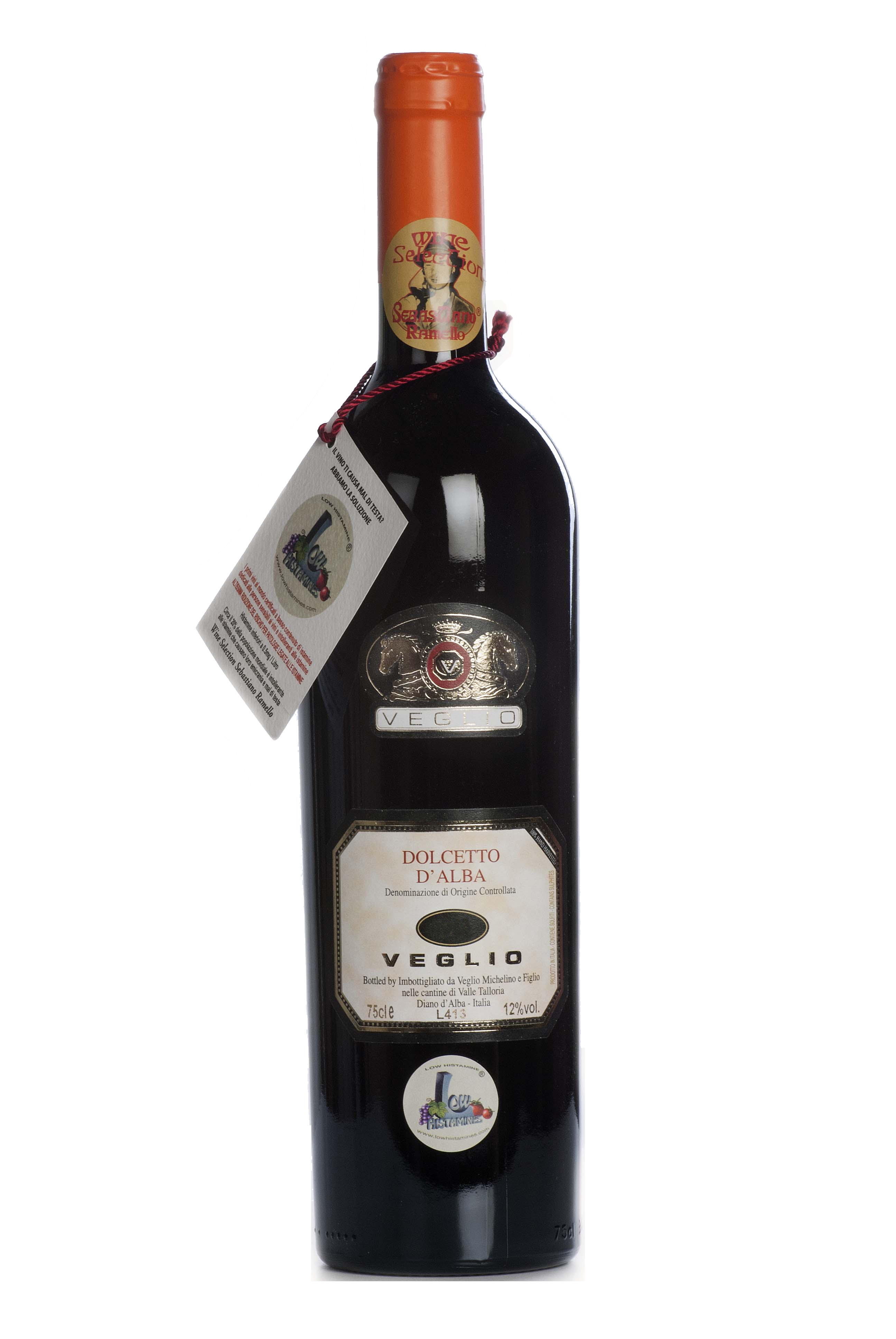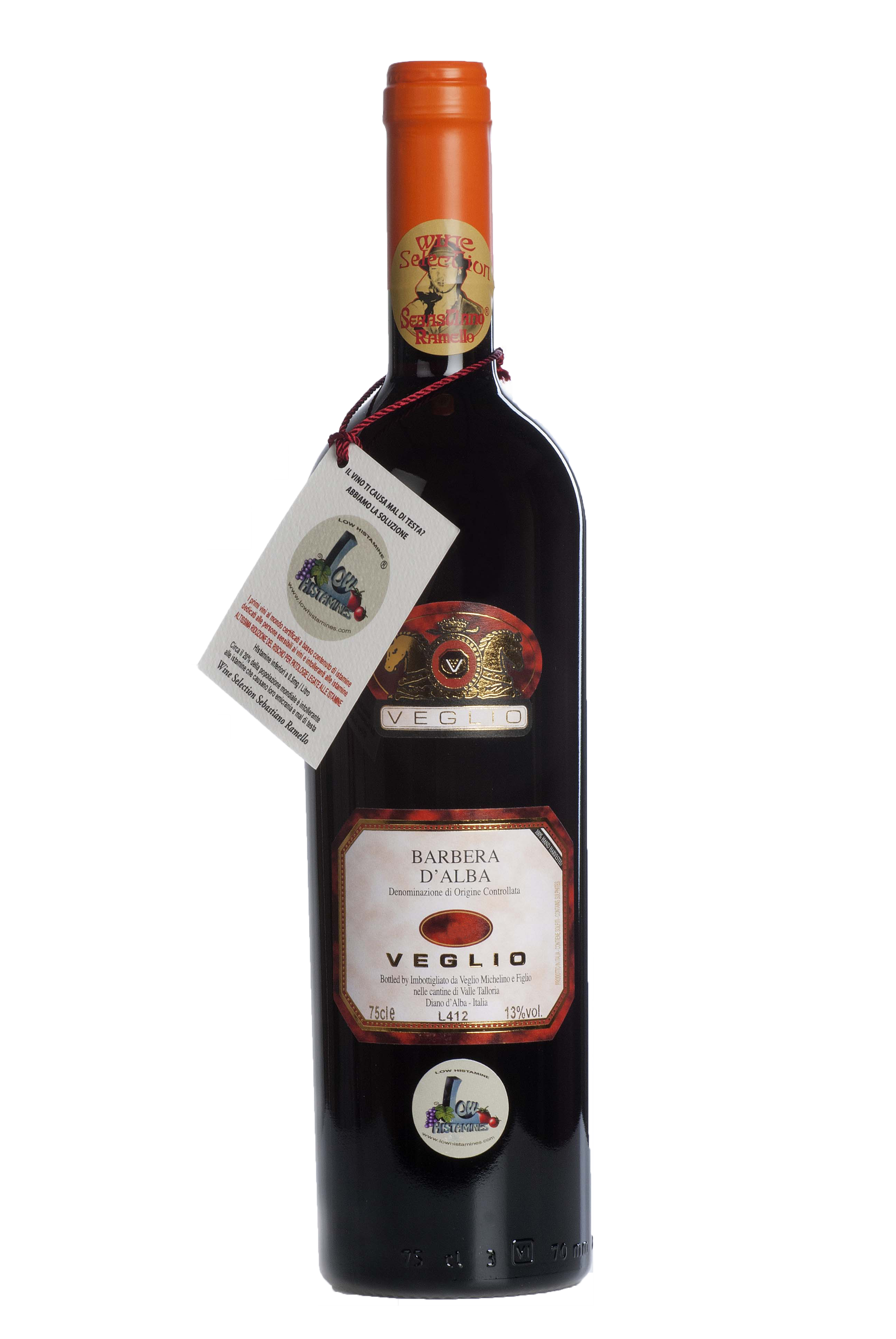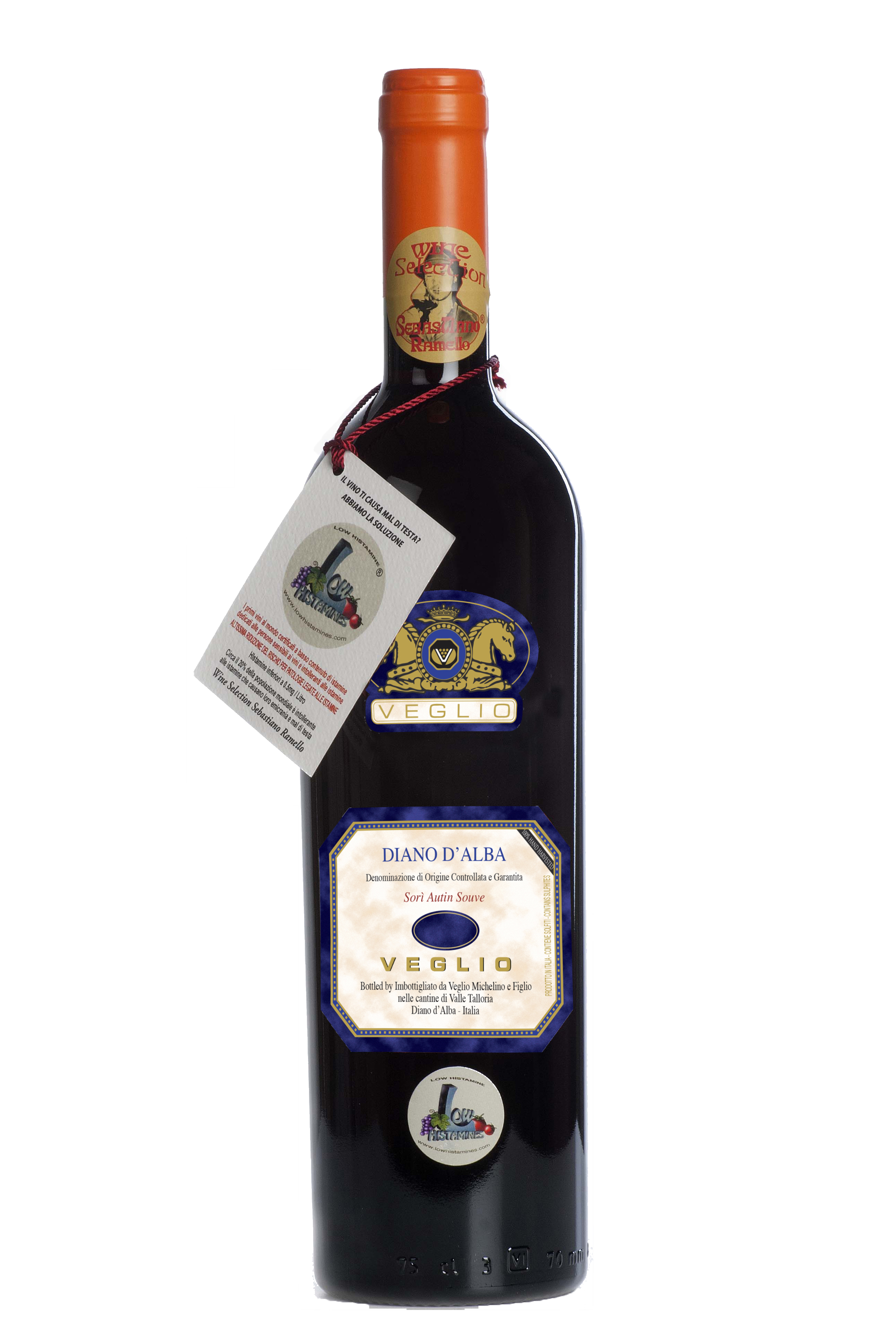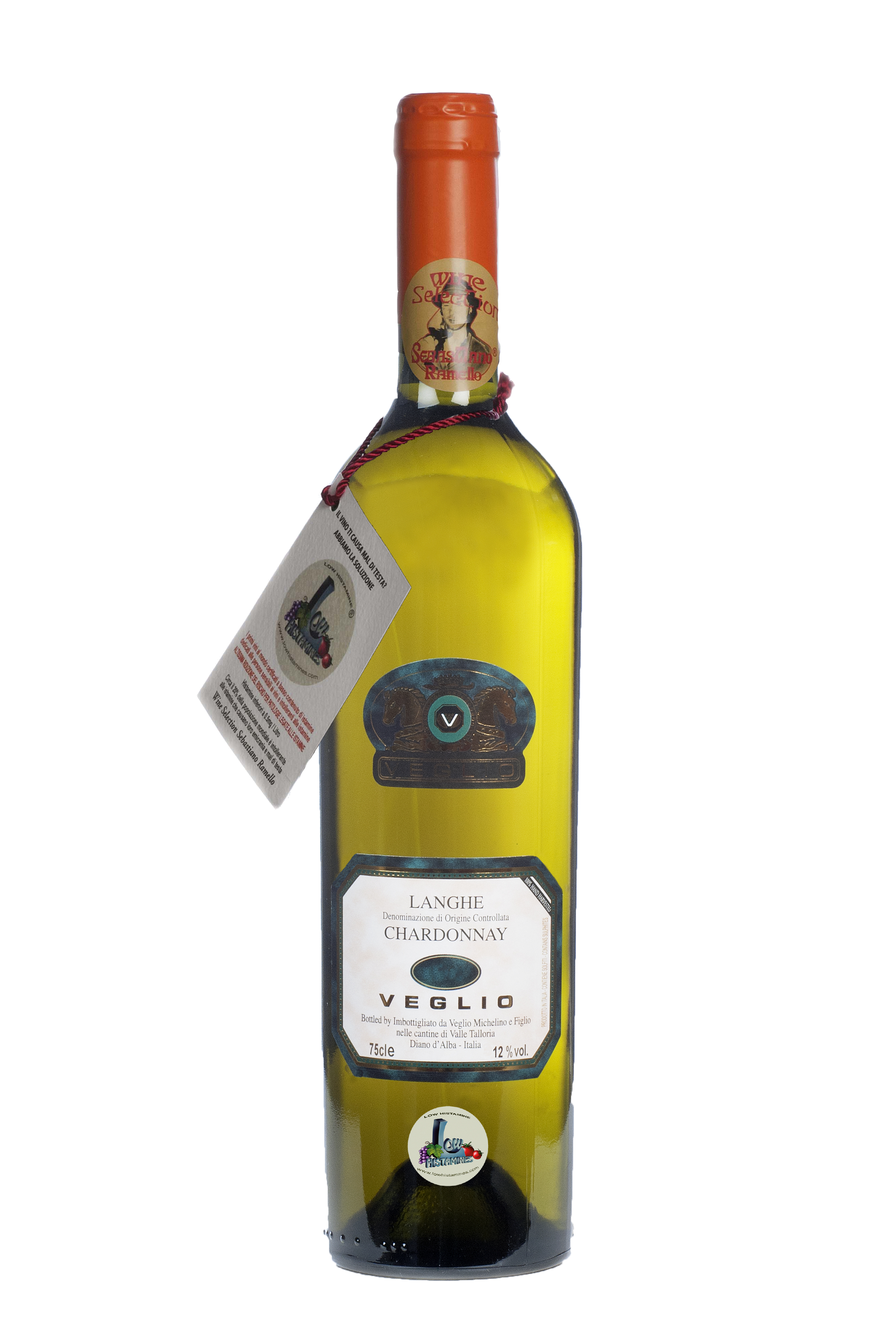Approved wines
Low Histamines only certifies wines with NO MORE than 0,5 mg/l at bottling
of histamine level
You can recognize Low Histamines wines by the fluo orange capsule, the Low Histamines logo, the golden medal "Wine Selection Sebastiano Ramello" which guarantees the quality, and a collar with a card that provides a brief explanation in both English and Italian.

copyright Low Histamines
A WINE "LOW HISTAMINES" FOR READING IN THE CERTIFICATION MUST THE FOLLOWING REQUIREMENTS AND FOLLOW THE FOLLOWING RULES OF APPROVAL:
REQUIREMENTS:
They must be wines that have held an official analysis document, produced by a laboratory recognized by the Government of origin, which demonstrates that the histamine level at bottling is less than 0.5mg/litre. Low Histamines, and its representatives, is not responsible for the level of histamines in the wine, it relies on the analysis certifications received from the wineries solely responsible for the value of histamines in their wines.
RULES:
1. Wine sensory analysis by the "Low Histamines" group
2. Laboratory analysis carried out by a laboratory recognized by the Italian Government, the level of istamine in mg / l in wine
3. If the analyzed wine, as required by point 2, has a histamine level of less than 0.5mg / l, and therefore suitable for obtaining the "Low Histamines" recognition, a second laboratory sample analysis will be carried out directly from the Enologist "Low Histamines" or by a winemaker indicated by Low Histamines or its representative"
4. If the wine passes second successful analysis, as in point 3, "Low Histamines" releases its vintage-related and bathtub-based certification, after signing its own product liability by the Wine Maker end the winery. Low Histamines and its representatives is not responsible for the level of histamines in the wine, it relies on the analysis certifications received from the wineries solely responsible for the value of histamines in their wines.
5. Each certified bottle shall be dressed with the colors and logo of "Low Histamines" recognition:
• Medal, warranty mark Low Histamines placed on the front of the bottle in plain sight near the front label of the producing winery.
• Orange capsule "Low Histamines"
• Wine Selection Sebastiano Ramello Gold Medal to guarantee the quality of the product placed on the neck of the bottle.
• In the countries where it is allowed, a collar label with "Low Histamines" logo and written: Low Histamines selects and certifies wines with less than 0.5mg / l histamine content at bottling, plus Low Histamines website: http://www.lowhistamines.com,on a side In the language of origin of the wine, in the other side in English or in the language of the country where the wine will be purchased or dispatched.
TIPS:
1. Use natural fertilizers in vineyards
2. hilly cultivation
3. south - south east - east - south west - west exposure
4. Use of steel barrels (wood or cement barrels are more difficult to sterilize and control molds and bacteria)
5. Manic cleansing of the cellar and all the tools that come into contact with grapes and wine
6. Thinning, depending on the type of grapes
7. Harvest at sunset, nocturnal or early sunshine
These are our wines, worlwide
certified LOW HISTAMINES:

DOLCETTO D’ALBA DOC LOW HISTAMINE
winery Veglio Michelino e Figlio
(Wine Selection Sebastiano Ramello)
CLASSIFICATION:
DOC wine (designation of certified and guaranteed origin).
GRAPE VARIETY:
Dolcetto 100%.
PRODUCTION ZONE:
MONTELUPO ALBESE.
SOIL: limestone -
dry.
EXPOSURE:
southwest.
COLOR: intense
ruby red.
NOSE: vinous and
fruity.
TASTE: dry,
harmonic and slightly bitter in a very
pleasant way.
PAIRINGS: a wine
suitable for every meal.
YIELD PER HECTARE:
56 HL.
HARVEST:
third-fourth week of September.
PROCESSING: soft
pressing and maceration for 4-5 days with temperature controlMATURATION: refined in stainless steel barrels and for
4 months in the bottle.
ALCOHOL BY VOLUME:
12 % by Vol.
TOTAL ACIDITY:
5.50 g/l.
HISTAMINE: <=
0,5 mg/l.
AVAILABLE SIZE:
750 ml.
AVERAGE LIFE: 3-4
years.

BARBERA D’ALBA DOC LOW HISTAMINES
winery Veglio Michelino e Figlio
(Wine Selection Sebastiano Ramello)
CLASSIFICATION:
DOC wine (designation of certified origin).
GRAPE VARIETY:
BARBERA 100%.
PRODUCTION ZONE:
DIANO D’ALBA- MONTELUPO ALBESE.
SOIL: medium.
EXPOSURE:
southwest.
COLOR: intense
ruby red.
NOSE: vinous and
fruity.
TASTE: dry, with a
light and pleasant sourness.
PAIRINGS: wine
suitable for every meal, perfect with pasta and meat dishes, especially red meat. Serve
at room temperature (18-20°C).
YIELD PER HECTARE:
70 HL.
HARVEST: fourth
week of September – first week of October.
PROCESSING: soft
pressing and maceration for 4-5 days with temperature control.
MATURATION:
refined in stainless steel barrels and for 4 months in the bottle.
ALCOHOL BY VOLUME:
13% by Vol.
TOTAL ACIDITY:
5.30 g/l.
HISTAMINE: <=
0,5 mg/l.
AVAILABLE SIZE:
750 ml.
AVERAGE LIFE: 4-5
years.

DIANO D’ALBA DOCG low histamine
winery Veglio Michelino e Figlio
(Wine Selection Sebastiano Ramello)
CLASSIFICATION:
DOCG wine (designation of certified origin).
GRAPE VARIETY:
Dolcetto 100%.
PRODUCTION ZONE:
DIANO D’ALBA. “Sorì” means that the vineyards have a good exposure
to the sun, “Autin Souve” is the name of the area,
together these words form the name Sorì Autin Souve.
SOIL: limestone –
dry.
EXPOSURE:
southwest.
COLOR: intense
ruby red.
NOSE: vinous and
fruity.
TASTE: dry and
slightly bitter in a very pleasant way.
PAIRINGS: a wine
suitable for every meal, perfect with pasta and meat dishes.
YIELD PER HECTARE:
56 HL.
HARVEST:
third-fourth week of September.
PROCESSING: soft
pressing and maceration for 4-5 days with temperature control.
MATURATION:
refined in stainless steel barrels and for 4 months in the bottle.
ALCOHOL BY VOLUME:
13 % by Vol.
TOTAL ACIDITY:
5.50 g/l.
HISTAMINES: <0,5 mg.
AVAILABLE SIZE: 750 ml.
AVERAGE LIFE: 3-4 years.

LANGHE CHARDONNAY DOC LOW HISTAMINES
winery Veglio Michelino e Figlio
(Wine Selection Sebastiano Ramello)
GRAPE VARIETY: CHARDONNAY 100%.
MATURATION:
refined in stainless steel barrels, in the bottle
for 3 months.
Awarded quality!
Veglio Michelino e Figlio Dolcetto D’Alba Low Histamine had been selected as a BevStar Award winner
for 2015, earning the Bronze Award in the Wine
category.
Currently the only certified Low Histamines wine on the U.S. market is the Dolcetto D'Alba D.o.c. labelled "La Collina Dei Re", an indigenous red wine produced 100% with Dolcetto grapes from the Langhe area (Piedmont region, Italy).
The territory of the Langhe is considered one of the most important areas for the production of high quality red wines in the world, and part of the Unesco World Heritage.
"La Collina Dei Re" was produced by the fifth generation of winermakers of a small family-run winery located in the hills, dedicated to the production of Barolo D.o.c.g. and other important Piedmontese wines.
The award is given based on judging by the Beverage World editorial team using a variety of criteria including: product taste, ingredients, packaging, market positioning and uniqueness.
Beverage World presents Gold, Silver and Bronze BevStar Awards in over ten categories, Wine specifically being one of them.Most importantly, BevStar Award winners will be featured in a special editorial section in the July 2015 issue of Beverage World.
